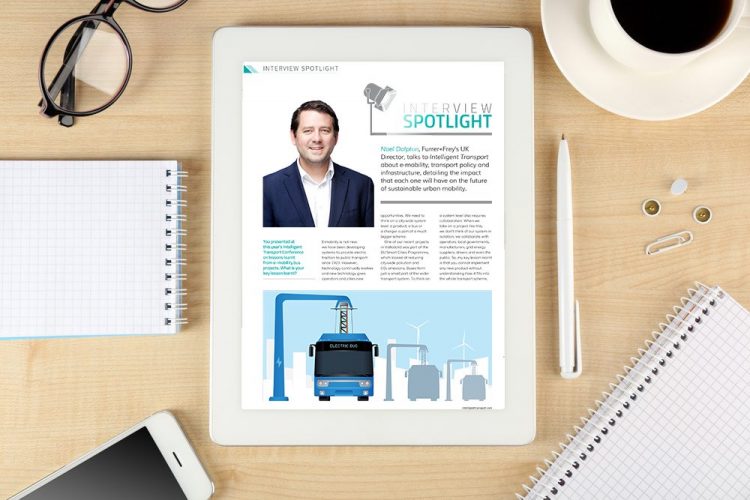Interview Spotlight: Furrer + Frey
- Like
- Digg
- Del
- Tumblr
- VKontakte
- Buffer
- Love This
- Odnoklassniki
- Meneame
- Blogger
- Amazon
- Yahoo Mail
- Gmail
- AOL
- Newsvine
- HackerNews
- Evernote
- MySpace
- Mail.ru
- Viadeo
- Line
- Comments
- Yummly
- SMS
- Viber
- Telegram
- Subscribe
- Skype
- Facebook Messenger
- Kakao
- LiveJournal
- Yammer
- Edgar
- Fintel
- Mix
- Instapaper
- Copy Link
Posted: 10 January 2019 | Noel Dolphin | No comments yet
Noel Dolphin, Furrer+Frey’s UK Director, talks to Intelligent Transport about e-mobility, transport policy and infrastructure, detailing the impact that each one will have on the future of sustainable urban mobility.


You presented at this year’s Intelligent Transport Conference on lessons learnt from e-mobility bus projects. What is your key lesson learnt?
E-mobility is not new: we have been developing systems to provide electric traction to public transport since 1923. However, technology continually evolves and new technology gives operators and cities new opportunities. We need to think on a city-wide system level: a product, a bus or a charger is part of a much bigger scheme.
One of our recent projects in Valladolid was part of the EU Smart Cities Programme, which looked at reducing city-wide pollution and CO2 emissions. Buses form just a small part of the wider transport system. To think on a system level also requires collaboration. When we take on a project like this, we don’t think of our system in isolation, we collaborate with operators, local governments, manufacturers, grid energy suppliers, drivers and even the public. So, my key lesson learnt is that you cannot implement any new product without understanding how it fits into the whole transport scheme, and to successfully slot something new into a system requires collaboration.
What impact do you think devolution will have on the UK transport policy?
We are starting to see ownership of regional transport networks increase with the formulation of regional transport alliances such as the Transport for West Midlands (TfWM), Transport for Wales (TfW) and Transport for the North (TfN). They are being formed across the country as regional cities and areas start to understand and take more ownership of their transport networks. The interplay between regional and national governments will play a key role in coordinating and delivering the national emissions targets through technological advances such as battery buses and charging systems. This also provides opportunities for suppliers to support these new bodies and be involved with the developments from the outset; providing technical insights as to what is possible and what is practicable.
What impact do you think bus-charging stations will have in the UK?
Building charging points for opportunity and trickle charging for public transport vehicles (trams, buses, bikes, etc.) will help drive down congestion by taking cars off the road. If we offered passengers a cleaner, cheaper and faster way to travel versus using a petrol/diesel car, this could help reduce congestion and boost ridership. However, this requires serious investment and commitment from local authorities and governments, but it will drive up ridership if approached in the right way.
Although we work in conventional, overhead electrification for trams and trains, we believe the future will be in battery-charge stations. We have developed a range of rapid-charge stations specifically to support the UK market. In particular, how do you charge a bus while still keeping to the existing timetable? Typically, at the end of every route there is a few minutes pause. We have developed our ‘Opportunity Charge’ stations to charge a bus in less than five minutes at the end of each route. Also, given that space in UK urban areas are normally tight, we have focused on miniaturising all our charge stations; they have no separate electronics box and so everything is contained in a small tower.
Related topics
Alternative Power, Sustainable Urban Transport
Issue
Issue 4 2018
Related organisations
Furrer+Frey







